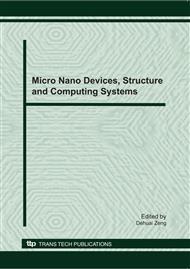p.622
p.628
p.634
p.638
p.644
p.650
p.656
p.662
p.667
The Fuzzy Control Method in Semi-Active Suspension
Abstract:
Based on the analysis of performance of vehicle and its suspension, half vehicle model of five DOF and road model were built and the dynamic equations of half vehicle were derived according to the parameters of a commercial vehicle. In addition, a novel fuzzy logic control system based on semi-active suspension was introduced to achieve the optimal vibration characteristic, with changing the adjustable dampers according to dynamic vertical body acceleration signal. The fuzzy control was designed based on non-reference model method that acceleration value was sent to the fuzzy controller directly. And then, simulation analysis of semi-active suspension with fuzzy control method were implemented on the B-class road surface. The results showed that the semi-active suspension control system introduced in this paper has better performance on vieicle vibration characteristic, compared to passive suspension.
Info:
Periodical:
Pages:
644-649
Citation:
Online since:
December 2010
Authors:
Keywords:
Price:
Сopyright:
© 2011 Trans Tech Publications Ltd. All Rights Reserved
Share:
Citation:


